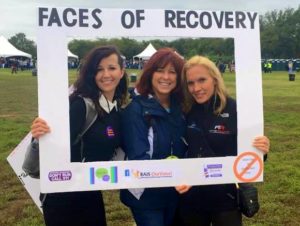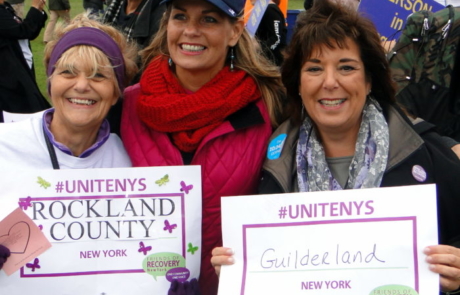THE RECOVERY MOVEMENT
The founding of Alcoholics Anonymous marks the beginning of what has come to be called the Modern Recovery Movement; a movement that has made (and continues to make) recovery from addiction to alcohol and other drugs both attainable and sustainable for millions of individuals and their loved ones. While we continue to create more recovery support services across the state and eliminate the shame and stigma that continue to keep so many from seeking help, we can never forget the efforts of those whose shoulders we stand upon — those who spoke out for us long ago. Learn more about the people and events that brought us to where we stand today and join us as we aspire to achieve their beautiful vision. While the modern recovery movement can be traced back to that fateful day in 1935 when Bill Wilson met Dr. Bob Smith in Akron, Ohio and the two went on to create Alcoholics Anonymous, it’s only within recent years that a dynamic, visible and vocal grassroots recovery advocacy movement has sprung up throughout the nation.
For far too long, Recovery, like addiction, has borne the weight of shame and stigma that prevents so many from seeking the help they desperately need and advocating for the services and support necessary to sustain Recovery. Thanks to the countless individuals who have come forth and said, “No More!” — considerable progress is being made and enormous hope exists. Hope for a future where addiction to alcohol and other drugs is seen as a disease, rather than a moral failing; and the full spectrum of addiction recovery support services are readily available to the millions of lives impacted by a substance use disorder.
The Recovery Movement in New York
Interested in learning more about the emergence of the Recovery Movement in New York State? Read our history or watch our video, the Power of Community.
Recovery Takes to the National Stage
The Recovery community first took to the national stage in 1976 when the National Council on Alcoholism (now the National Council on Alcoholism & Drug Dependence or NCADD) presented Operation Understanding, a press conference in Washington D.C. at which 52 prominent celebrities and professionals from various fields announced they had recovered from alcoholism. What was then seen as a turning point for the Recovery community quickly faded from view as a result of various government policies and the attention to the war on drugs.
Nearly 40 years later, on October 4, 2015, the Recovery Community descended on the National Mall in Washington, D.C. to take the stage once again. This time, on a much grander scale. Billed as Unite to Save Addiction: the Day the Silence Ends, the event attracted more than 30,000 friends of recovery including celebrities, members of Congress, athletes, the Surgeon General and recovery allies from across America to call for an end to the shame and stigma attached to the disease of addiction; and new, better and more support for recovery nationwide. The event was produced by the national recovery advocacy organization, Facing Addiction, co-founded by noted Recovery advocate Greg Williams. Mr. Williams is the man behind the acclaimed recovery documentaries “The Anonymous People” and “Generation Found.”
A Comprehensive Look at the Modern Recovery Movement
Perhaps no one has written more about Recovery than the acclaimed researcher, William White. For a comprehensive review of the modern recovery movement, we suggest reading Mr. White’s Toward A New Recovery Movement: Historical Reflections on Recovery, Treatment & Advocacy; State of the New Recovery Advocacy Movement; or the Chronology of the New Addiction Recovery Movement.



